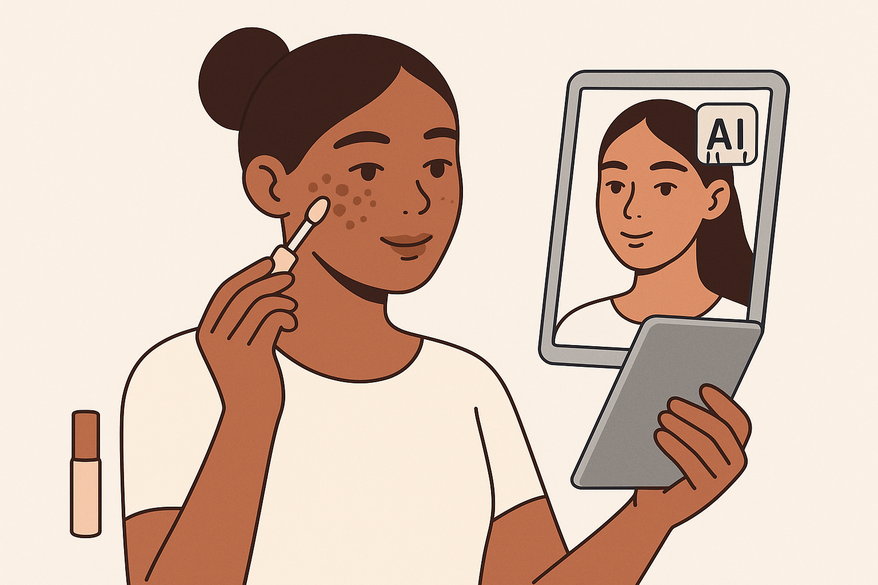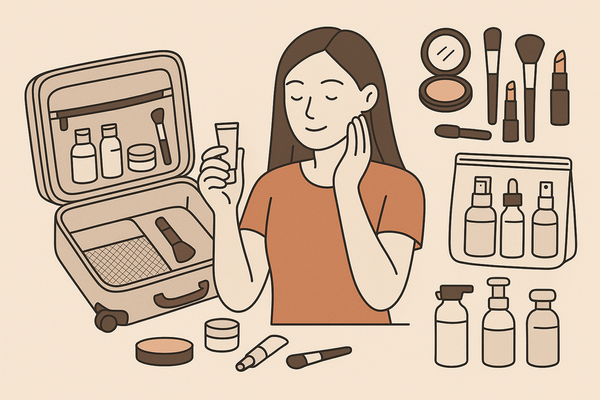The Ultimate Guide to Color Correcting Dark Spots: Techniques & AI Makeup Generator Tips
Learn effective techniques for color correcting dark spots, and discover how AI makeup generators can enhance your routine for a flawless complexion.

Estimated reading time: 10 minutes
Key Takeaways
- Color correction neutralizes hyperpigmentation for a flawless makeup base.
- Choose hues based on the color wheel: green for redness, peach/orange for grey-blue spots, yellow for mild discoloration.
- Proper skin prep and layering—cleanse, moisturize, prime, correct, set, foundation, concealer—ensures long-lasting coverage.
- AI makeup generators offer personalized shade matching and step-by-step guidance to streamline your routine.
- Daily SPF and gentle skincare habits help prevent new dark spots over time.
Table of Contents
- Section 1: Understanding Dark Spots and Color Correcting Dark Spots
- Section 2: Step-by-Step Makeup Techniques for Color Correcting Dark Spots
- Section 3: AI Makeup Generator for Color Correcting Dark Spots
- Section 4: Tips and Tricks for Color Correcting Dark Spots with AI Makeup Generator
- Section 5: Tips for Long-Term Spot Prevention
- Conclusion
Section 1: Understanding Dark Spots and Color Correcting Dark Spots
Unearthing the root of hyperpigmentation is the first step to effective camouflage. Dark spots, often called hyperpigmentation or blemishes, result from excess melanin due to sun exposure, hormonal changes, acne scars, or aging. They may vary from light brown to deep grey-blue, demanding targeted correction rather than standard concealer alone.
- Why standard concealer falls short: Foundation alone can appear heavy without neutralizing the underlying hue.
- Color wheel principle: Opposite hues cancel each other—green versus red and peach/orange versus blue-grey.
- Corrector shades by skin tone:
- Light skin: yellow brightens mild spots.
- Medium/deep skin: peach/orange neutralizes grey.
- Very deep hyperpigmentation: red or deep orange for intense darkness.
- Texture matters: Cream correctors suit dry skin, liquids suit oily or combination skin, and sticks or mousses are great for travel.
"In my makeover class, peach corrector under medium-coverage foundation made spots vanish instantly without thick buildup."
Section 2: Step-by-Step Makeup Techniques for Color Correcting Dark Spots
Goal: A foolproof routine to neutralize spots and achieve a natural finish.
Step 1: Skin Prep
- Cleanse with a pH-balanced face wash.
- Moisturize using a non-comedogenic lotion.
- Apply broad-spectrum sunscreen (SPF 30+).
- Prime with a thin, silicone-based formula to blur pores.
Source: YouTube tutorial
Step 2: Apply Color Corrector
- Use a small synthetic brush or fingertip for precise application.
- Tap (don’t swipe) corrector on each spot, blending edges gently.
- Ensure full neutralization without overloading product.
Source: L’Oréal Paris Color Correction Guide
Step 3: Set Corrector
- Dust finely milled translucent powder over corrected areas.
- Press powder with a small fluffy brush or puff to maintain opacity.
Source: YouTube tutorial
Step 4: Layer Foundation
- Use a damp beauty sponge or dense buffing brush.
- Bounce or stipple to build medium coverage.
- Blend outward toward neck and hairline to avoid harsh lines.
Step 5: Targeted Concealer
- Dot creamy concealer matching your skin tone over any visible spots.
- Tap edges to feather into surrounding skin.
For top concealer picks check best concealer picks
Key Tip: Build in thin layers to prevent a cakey finish.
Section 3: AI Makeup Generator for Color Correcting Dark Spots
What is an AI makeup generator? It’s a digital tool or app using machine learning to analyze your skin tone, spot severity, and face shape via a selfie or questionnaire. It then recommends the perfect corrector hue, foundation formula, and application steps based on pro makeup datasets.
For a seamless AI-driven experience, Makeup Check AI offers personalized spot-correcting routines right on your phone.
Benefits
- Reduces guesswork with precise shade matching.
- Speeds up your routine with step-by-step guidance.
- Integrates the latest makeup trends and professional techniques.
Limitations
- Accuracy depends on image quality and lighting.
- May require manual tweaks for unique textures or allergies.
- Should complement, not replace, a professional touch.
Top AI Makeup Generator Tools
- ModiFace Virtual Try-On — AR makeup previews
- YouCam Makeup — AI-driven skin analysis
- Sephora Virtual Artist — Shade matching and color correction demo
Section 4: Tips and Tricks for Color Correcting Dark Spots with AI Makeup Generator
- Start light: Apply the palest corrector shade first; layer deeper tones only if needed.
- Pair tools: Use a precision brush for spots and a damp sponge for blending.
- Layer lockdown: Dust translucent powder after each tinted layer—corrector, foundation, concealer.
- Timing matters: Wait 10–15 seconds for each layer to set before the next application.
- Hybrid testing: Compare AI recommendations with in-store swatches under natural light.
- Midday maintenance: Blot excess oil and touch up problem areas with pressed powder.
Section 5: Tips for Long-Term Spot Prevention
- Daily SPF: Your best defense against new dark spots.
- Brightening serums: Vitamin C or niacinamide help fade hyperpigmentation over time.
- Gentle exfoliation: Weekly AHA/BHA peels encourage cell turnover.
- Professional treatments: Consult a dermatologist for chemical peels or laser therapy if needed.
Conclusion
Mastering color correction and leveraging an AI makeup generator empowers you to achieve a radiant, even complexion. By understanding hyperpigmentation, following precise makeup routines, and embracing technology, you’ll transform your beauty regimen into a personalized, pro-level experience. Experiment with both time-tested artistry and digital innovation to discover what works best for your skin.
Call to Action
Download our free PDF tutorial or try a demo of an AI makeup generator today to customize your spot-correcting routine.
FAQ
- Which corrector shade should I use for my skin tone? Match the neutralizing hue to your spot’s color—green for redness, yellow for mild brown, peach/orange for grey spots, and red or deep orange for very dark areas.
- Can AI makeup generators replace professional makeup artists? They streamline shade matching and application steps, but pairing AI guidance with human artistry yields the best results.
- How often should I reapply sunscreen to prevent new dark spots? Reapply every two hours when exposed to direct sunlight and after sweating or swimming.
- Will color correcting make my makeup look cakey? Not if you build in thin layers, set each step with translucent powder, and avoid overloading product.




